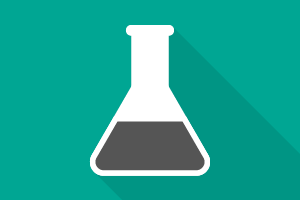Classroom Resources: Energy & Thermodynamics
Filter by:
101 – 109 of 109 Classroom Resources
-

Atomic Spectra, Emission Spectrum, Emission Spectrum, Electromagnetic Spectrum, Interdisciplinary, Identifying an Unknown | Middle School, High School
Lab: Build a Spectroscope
In this lab, the students will make and use a spectroscope to identify the spectra within various types of light bulbs. The students will then develop an improved design for the spectroscope.
-

Chemical Change, Observations, Exothermic & Endothermic, Temperature, Chemical Change | High School
Lab: Observing a Chemical Reaction
In this lab, students will practice making careful observations and measurements while witnessing a chemical change.
-

Pros Cons of Nuclear Power, Radiation, Radiation, Renewable Energy | High School
Activity: Nuclear Energy Power Plants
In this activity, students will write a persuasive essay in which they state an opinion about whether the number of nuclear plants should be increased or decreased.
-

Pros Cons of Nuclear Power, Radiation, Radiation, Renewable Energy | High School
Activity: Nuclear Energy Debate
Nuclear Energy Debate Grade Level: High School Topic: Nuclear Chemistry Subtopic: Pros Cons of Nuclear Power
-

Molecular Motion, Heat | High School, Middle School
Lesson Plan: Modeling the Melting of Ice
In this lesson, students will create a particulate model of matter that explains energy changes and transfer during a phase change.
-

Emission Spectrum, Emission Spectrum | High School
Lesson Plan: Modeling Energy in Chemistry: Energy and the Electron
This activity is designed for students to build a scientific argument about the relationship between energy and spectral lines by exploring how light interacts with atoms. In the process, students will examine proposed models of the hydrogen atom and use collected data to analyze the proposed models. They will then select one of the models and write a scientific argument to support their choice. Students will then review additional data to support and/or refute their selection. Based on their analysis, students will revise their selected model and construct a new argument to support their revisions.
-

Specific Heat, Heat of Combustion | High School
Demonstration: Measuring Heat
In this demonstration students will observe what happens to the temperature of water when different volumes of hot water are added and also when copper, the same temperature as the hot water is added.
-

Exothermic & Endothermic, Classification of Reactions
Simulation: Energy Changes in Chemical Reactions
In the November 2016 simulation, students will evaluate the energy changes in an endothermic and an exothermic chemical reaction. Students will have the opportunity to compare how energy is absorbed and released in each reaction, and will make a connection between the standard energy diagrams associated with each reaction type.
-

Atomic Theory, Law of Conservation of Energy
Simulation: Exciting Electrons
In the March 2015 issue, students explore what happens when electrons within a generic atom are excited from their ground state. They will see that when an electron relaxes from an excited state to its ground state, energy is released in the form of electromagnetic radiation.